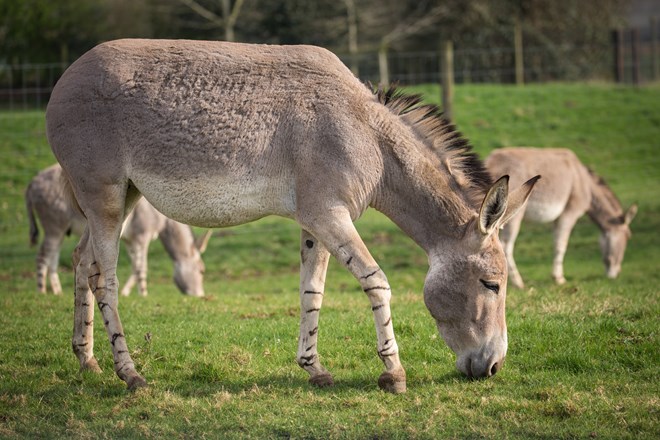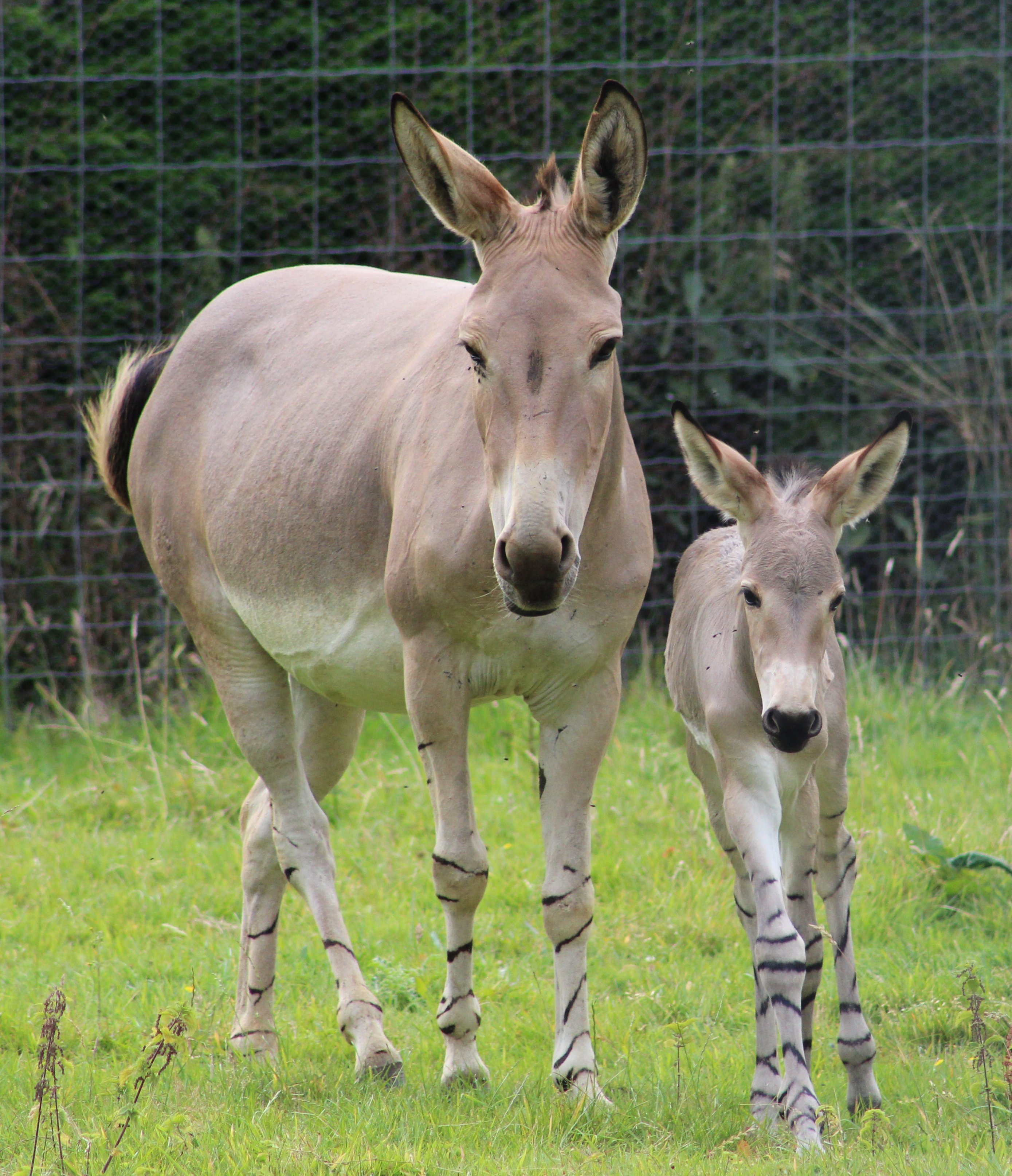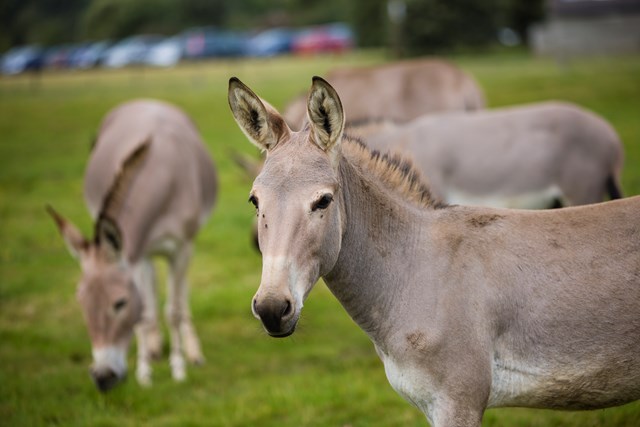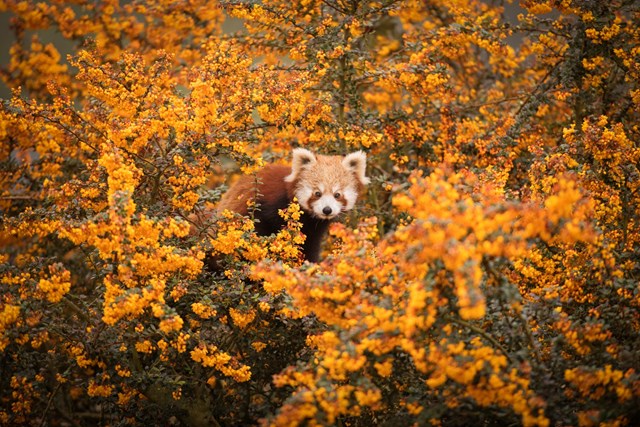
Overview
Woburn Safari Park is home to a herd of Somali wild ass which can be found in the Road Safari. In 2021 Woburn welcomed a very exciting new arrival, when a young male foal was born.
The birth of the foal demonstrates how successful breeding programmes can be in safeguarding the future of critically endangered species
In the summer months, the herd of Somali wild ass will stay out in the section with access to shelter within the Antelope House. During the colder months, these animals will stay indoors overnight. The Antelope House is a facility that enables the management of numerous endangered and critically endangered species of ungulates.

All about us
| Distribution: | Scattered populations in Djibouti, Eritrea, Ethiopia and Somalia. |
|---|---|
| Habitat: | Stony deserts, semi-arid bush lands and grasslands. |
| Height: | 4.2 to 5.5 ft at the shoulder |
| Weight: | Up to 275 kg |
| Lifespan: | 40 Years |
| Threats: | Competition and interbreeding between wild and domestic species has caused a decline. |
About us
Scientific name: Equus africanus somaliensis
Somali wild ass have a very flexible and loose social structure that are usually very small possibly due to low forage quality and availability. They usually form temporary aggregations (groups) and may stay together for anything between a day and several weeks depending on the resources available.

Somali wild ass have a very flexible and loose social structure that are usually very small possibly due to low forage quality and availability. They usually form temporary aggregations (groups) and may stay together for anything between a day and several weeks depending on the resources available.
The only bond is that of a mother and her foal. Adult males are usually solitary and tend to occupy large territories that are marked with dung heaps which is an essential marker in the flat and monotonous terrain. The dominant male will tolerate subordinate males within his territory as long as they recognize his superiority and stay away from any females. Some other males will form bachelor herds until they are able to obtain their own territories.
Males reach sexual maturity at the age of two however, because they have to compete with other territorial males it is unlikely that they will breed until around four years of age. Dominant males will try to obtain a large territory which has within it a water source and a resource of grazing. Having this territory gives the dominant male exclusive access to mate with females passing through. The gestation period is one year after which a female will give birth to a single foal. The foal will be able to follow their mother within a few hours after birth and are weaned by the age of one.
They are predominately grazers feeding on a variety of grasses and herbs but they will also utilize browse. Their teeth are large with flat surfaces making them prefect for tearing and chewing the toughest of plants. They also have a very tough digestive system that can break down almost inedible vegetation but at the same time extract and save as much moisture as possible. They need to drink water at least once every three days and they will remain within 30 km of a water source.
Somali wild ass are very stocky and they have a large head with large ears that are fringed with black hair. Their manes are stiff and upright and the tips of the hairs are black. They have a short coat which is grey in colour and it fades to white on the underside of their body and down their legs. Their most distinctive feature is the black horizontal stripes that they have on their legs. They have a black stripe along their backbone and a tail also tipped with black hair. Their hooves are long and narrow which allow them to be surefooted in their rocky habitat.
They are an ancestor of the domestic donkey and have been captured for domestication for centuries. Interbreeding between wild and domestic species has caused a distinct decline in population numbers as well as being hunted for their meat and for use in traditional medicine in both Ethiopia and Somalia. They also have to compete with domestic livestock for grazing and access to water due to agricultural developments in their habitat which pose further threats to the survival of this species. It is believed that there may be less than 50 mature individuals of this critically endangered species left in the wild.
African wild asses are divided into two subspecies, the Somali and Nubian wild ass.
Somali wild ass have excellent vision and hearing. If they sense the presence of a predator they would rather run away then fight. They do however have a powerful enough kick to protect themselves when they need to.

